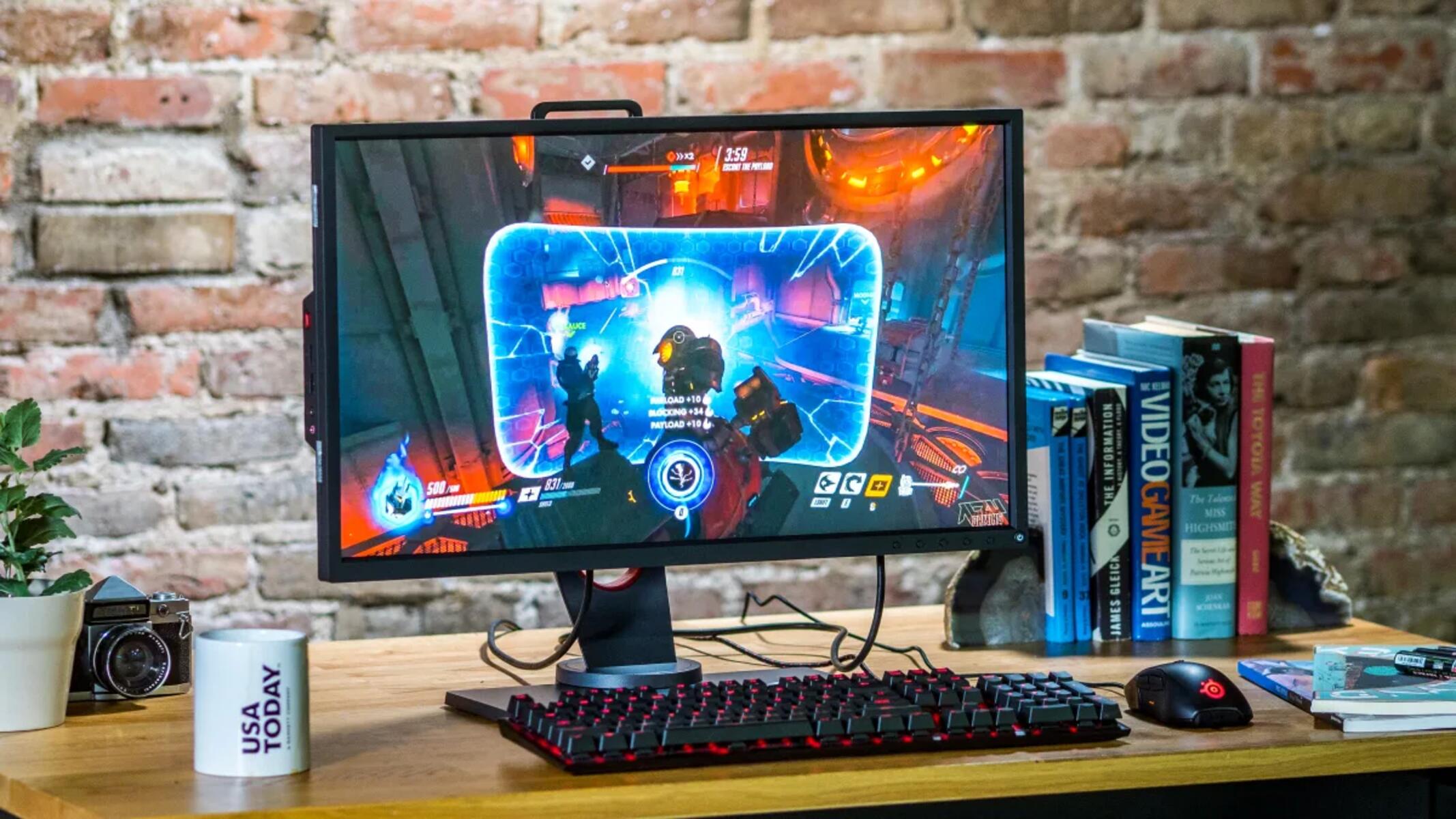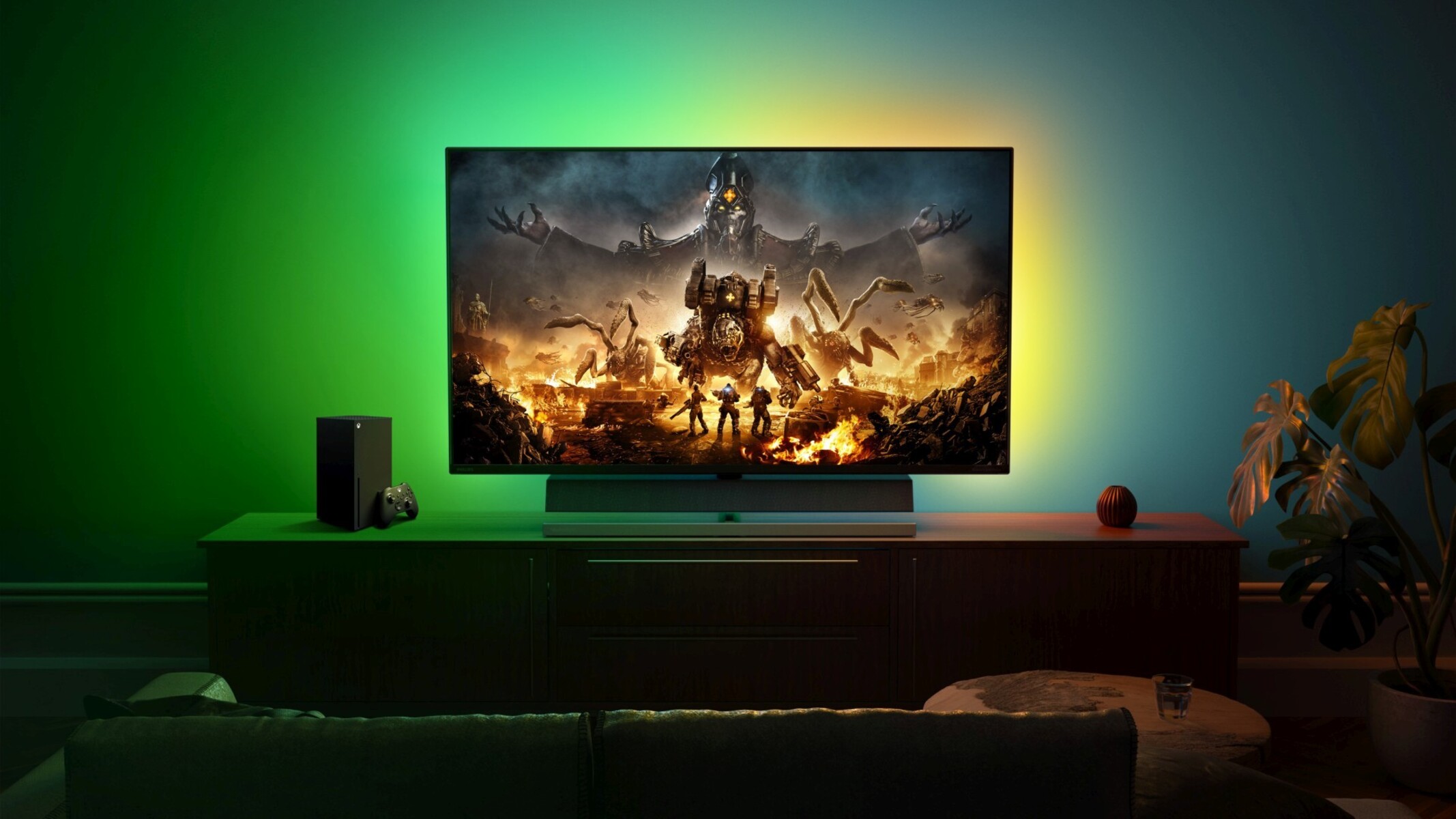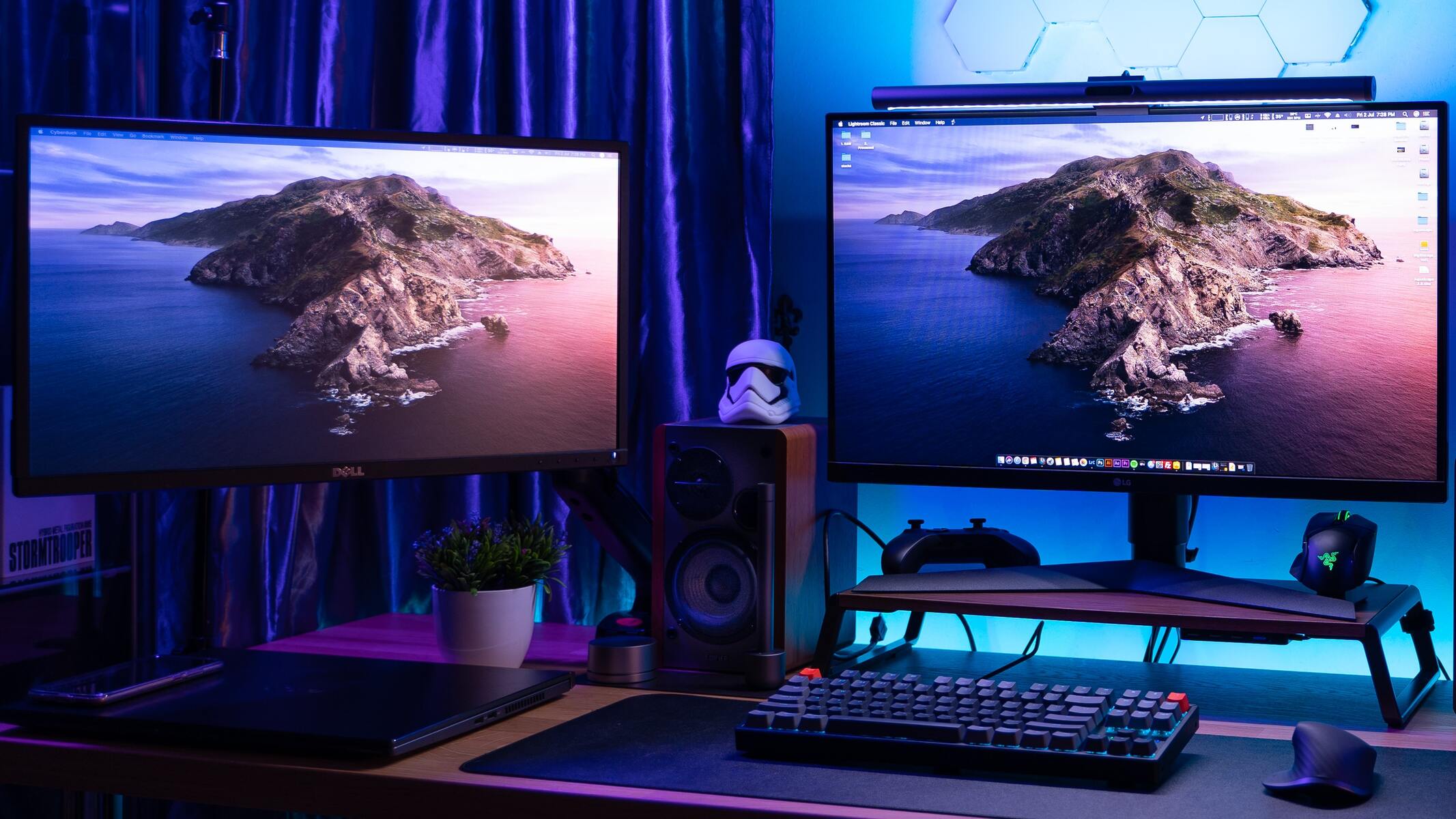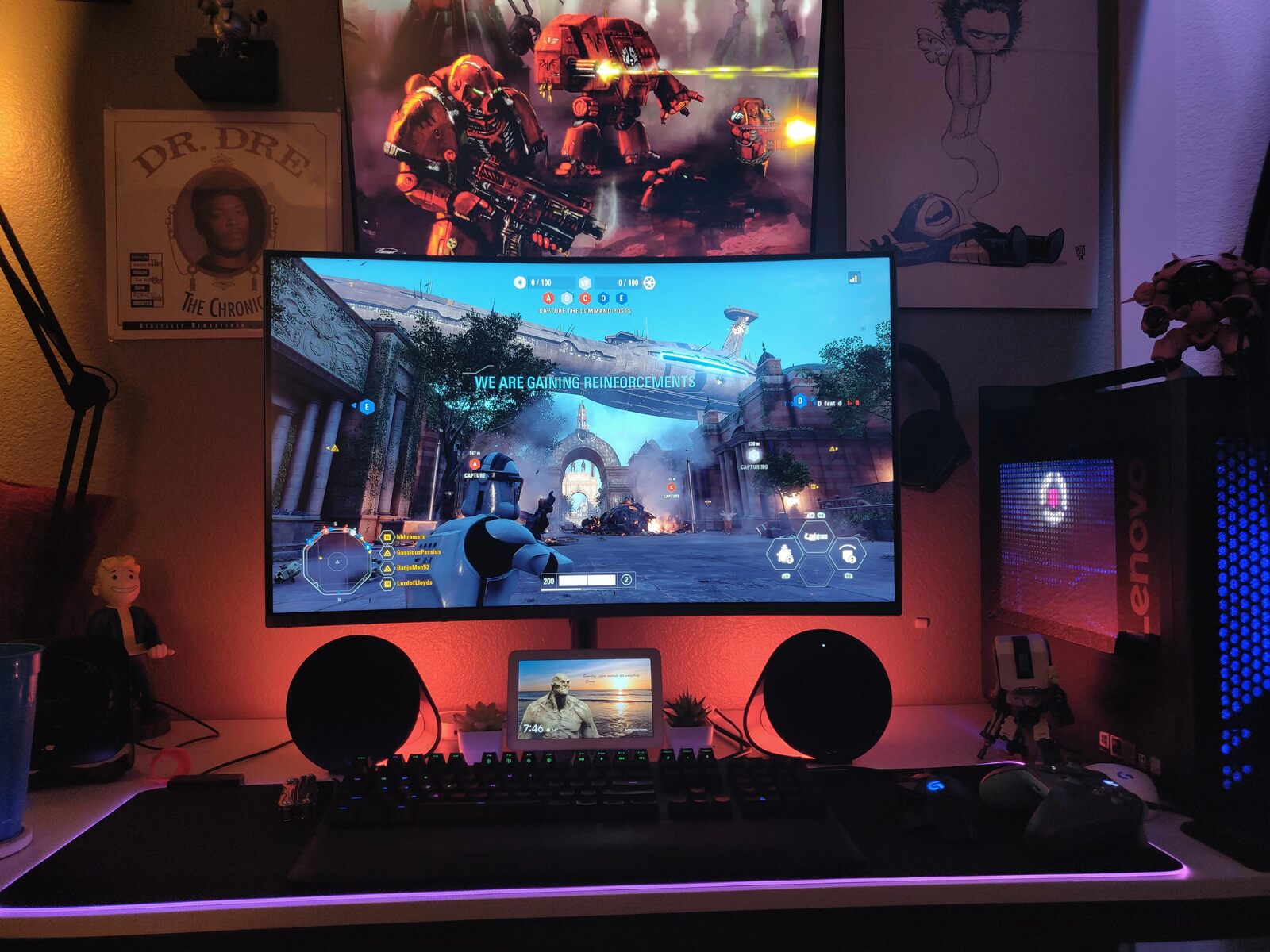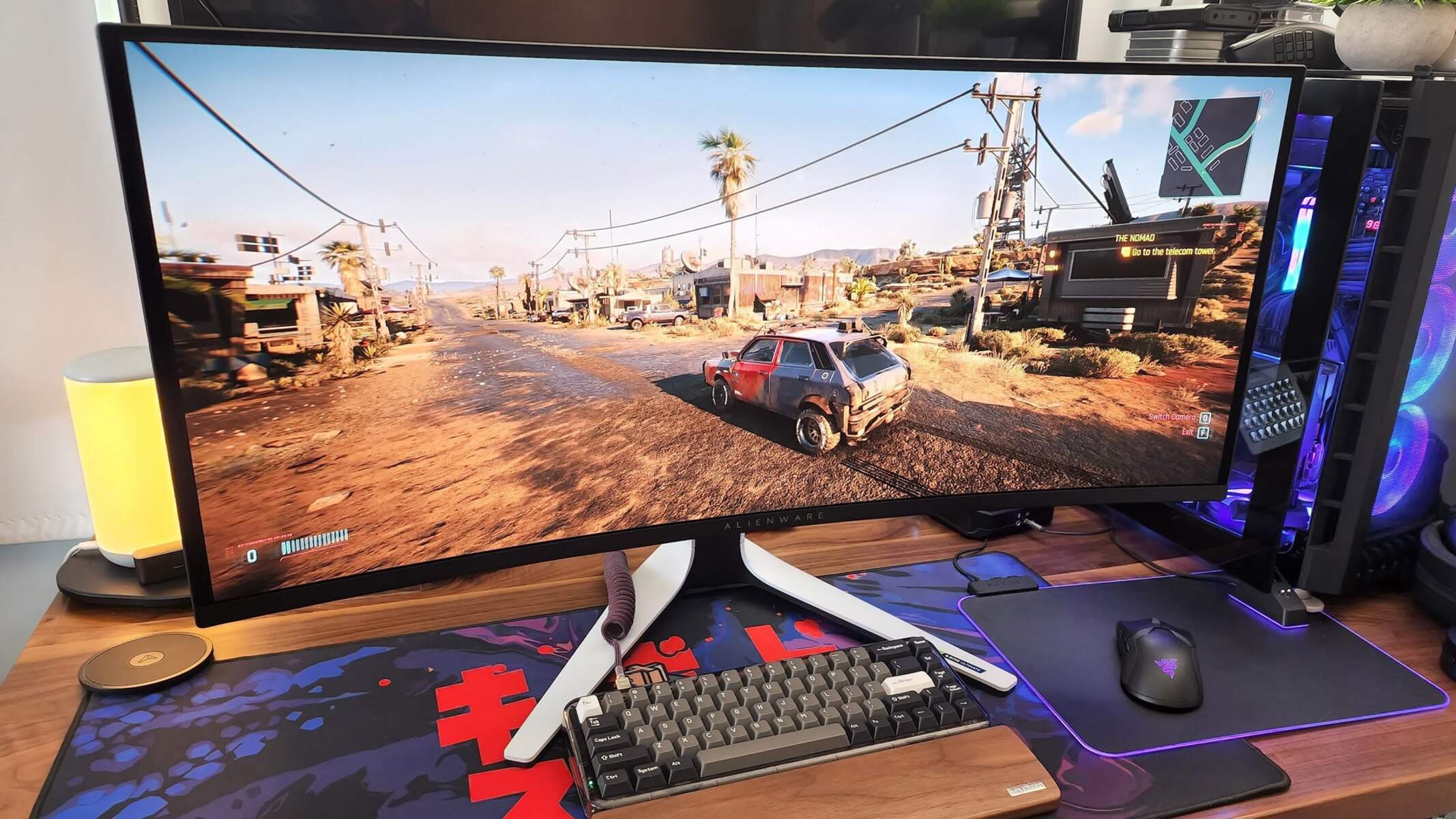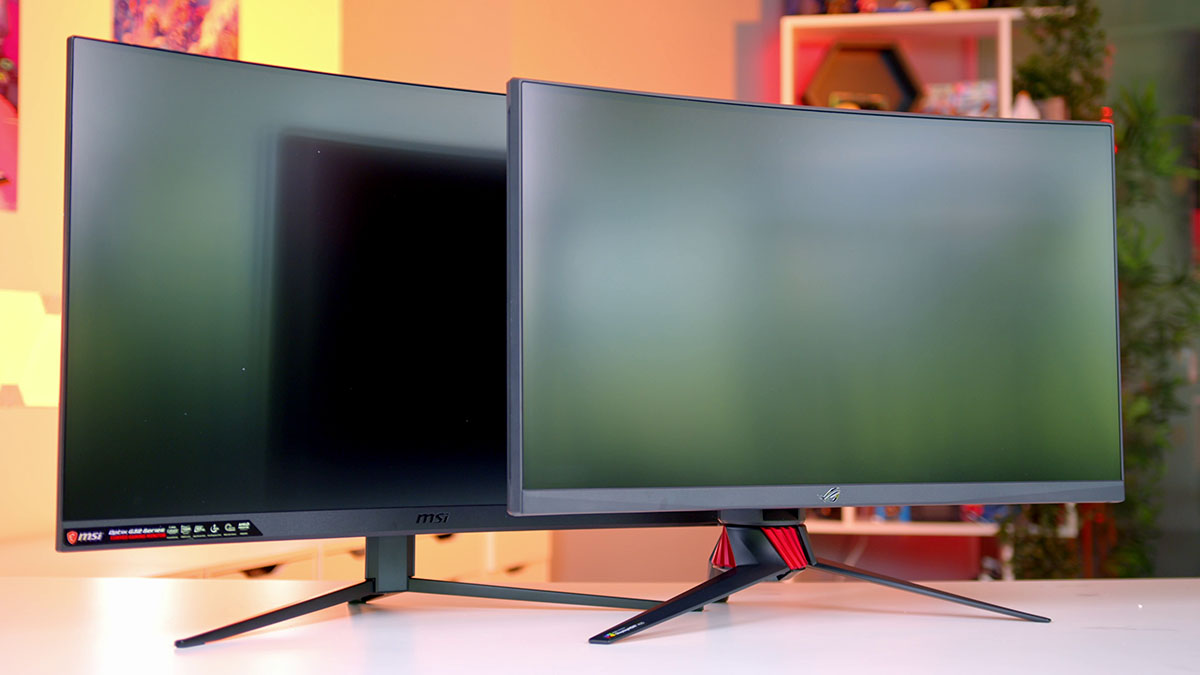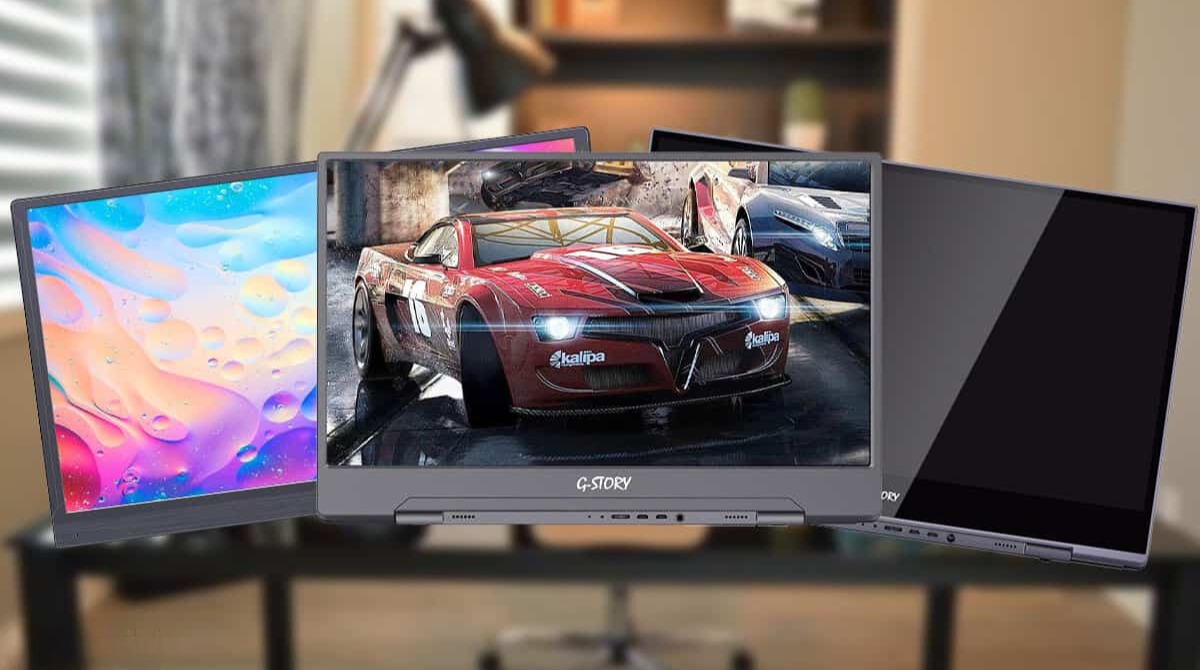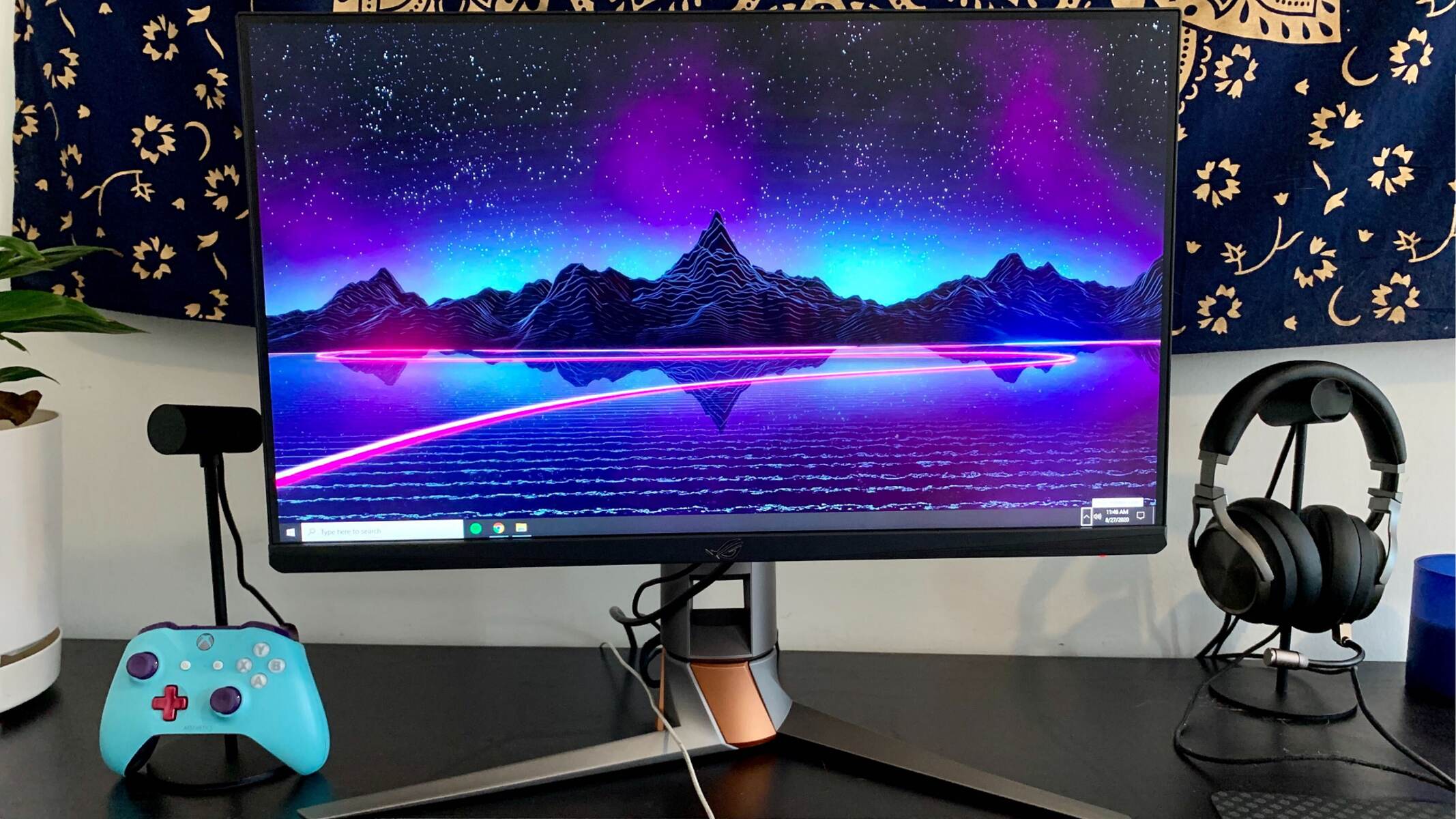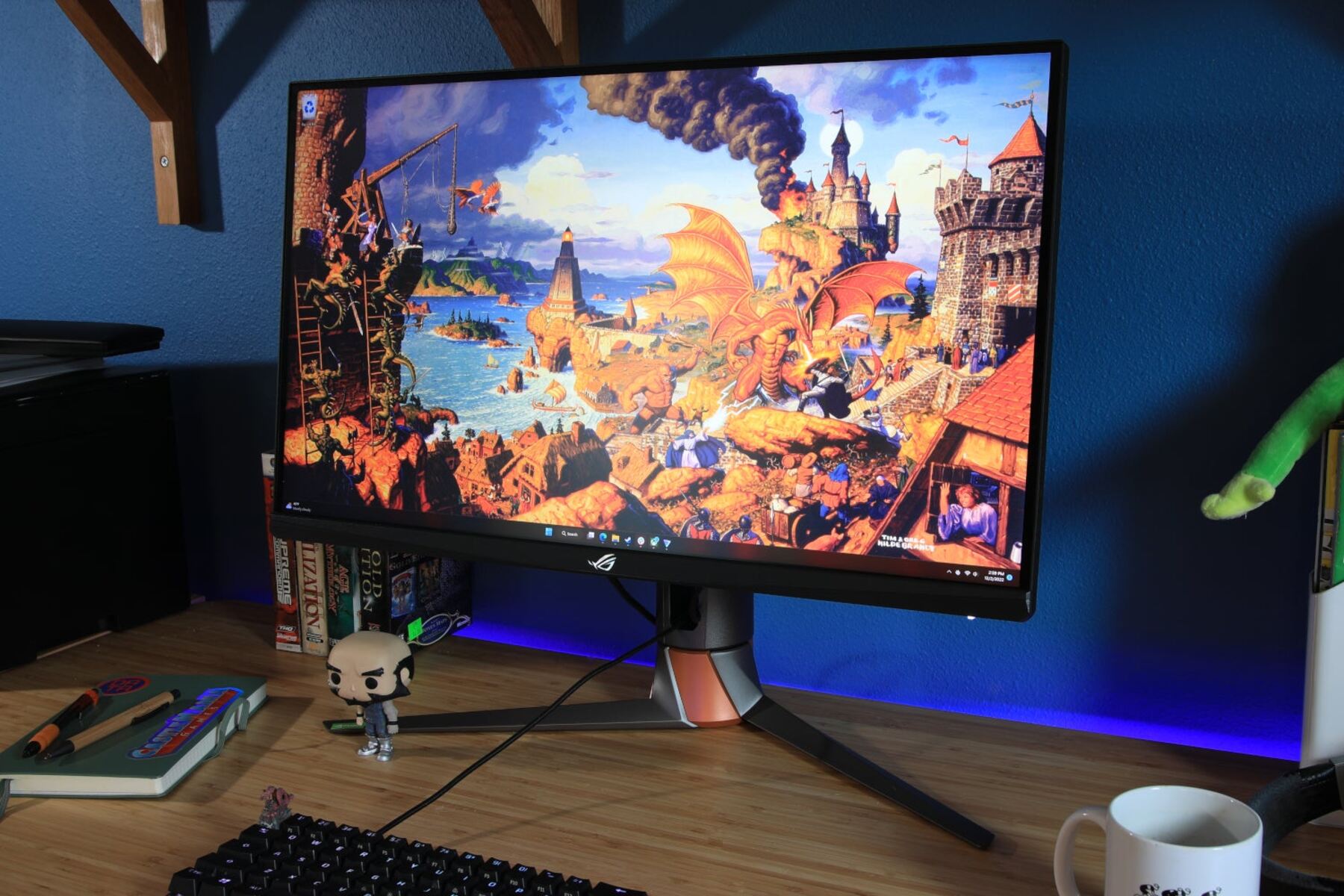Introduction
Welcome to the world of gaming monitors and the exciting realm of High Dynamic Range (HDR) technology. As avid gamers, we always strive for the most immersive gaming experience possible. The integration of HDR into gaming monitors has significantly enhanced the visual quality, allowing us to enjoy games with stunning detail, vibrant colors, and enhanced contrast. In this article, we will dive into the world of HDR and explore how it can elevate your gaming experience to new heights.
High Dynamic Range, or HDR, is a display technology that expands the range of brightness, color, and contrast in an image. It enables the display to produce a wider range of colors, from deep blacks to bright whites, and everything in between. This means that HDR content appears more lifelike, with greater depth and realism. As a result, gaming on an HDR monitor can create an incredibly immersive experience, where colors pop, shadows have more depth, and details are richer and more vibrant.
So, what sets HDR gaming monitors apart from their standard counterparts? While traditional monitors have a limited dynamic range, HDR monitors have a higher color depth and brightness capabilities. This allows the display to faithfully reproduce the wide gamut of colors and the intricate details in HDR content, resulting in a stunning and mesmerizing visual experience.
However, to fully enjoy the benefits of HDR in gaming, it is important to ensure that your system meets the necessary requirements. Your gaming setup must include a compatible graphics card, an HDR-capable monitor, and the right software settings. Without these, you may not be able to harness the full potential of HDR technology.
In the upcoming sections, we will guide you through the process of enabling HDR on your Windows system, adjusting HDR settings, optimizing your gaming experience, and troubleshooting any potential issues. By the end of this article, you will be ready to unlock the true power of HDR and immerse yourself in a whole new world of gaming excitement.
What is HDR?
High Dynamic Range (HDR) is a display technology that enhances the visual quality of images and videos by expanding the range of brightness, color, and contrast that can be displayed. In simple terms, HDR allows for a more lifelike and immersive visual experience.
Traditionally, displays have had a limited dynamic range, which means they can only show a certain range of colors and brightness levels. This can result in images that appear flat or washed out, with less detail in both the dark and bright areas.
With HDR, however, displays have a much wider color gamut and increased brightness capabilities. This allows them to accurately reproduce a broader range of colors, from the deepest blacks to the brightest whites. As a result, HDR content appears more vibrant, with greater depth and realism.
One of the key aspects of HDR is its ability to preserve details in both the shadows and highlights of an image. This means that even in scenes with a high contrast between dark and bright areas, you’ll be able to see intricate details that would be lost on a non-HDR display. Whether it’s the subtle shading in a dark corner or the brilliant rays of light piercing through a window, HDR brings these details to life.
Furthermore, HDR content often includes metadata that provides additional information about the intended brightness and color levels of the content. This allows compatible displays to optimize the image playback, ensuring that the content is presented as intended by the creators.
When it comes to gaming, HDR offers a whole new level of visual immersion. Imagine exploring sprawling open worlds with vibrant landscapes, engaging in epic battles with realistic lighting effects, or experiencing horror games with spine-chilling shadows and atmospheric lighting. HDR can take your gaming experience to the next level by enhancing the visual fidelity and creating a more captivating and realistic environment.
In the next section, we’ll delve deeper into the specific requirements for HDR in gaming monitors to ensure that you can fully enjoy the benefits of this exciting technology.
Understanding HDR in Gaming Monitors
When it comes to gaming monitors, understanding the intricacies of HDR is essential to fully appreciate its impact on your gaming experience. HDR in gaming monitors brings a new level of visual quality, delivering more vibrant colors, sharper contrast, and enhanced detail. Let’s take a closer look at how HDR works and why it matters for gaming.
HDR technology in gaming monitors allows for a wider dynamic range than traditional monitors. This means that you can expect deeper blacks, brighter whites, and a broader spectrum of colors in your gaming visuals. The expanded range of brightness and contrast levels results in a more realistic and immersive gaming experience.
In HDR monitors, the backlighting system is one of the key components that make HDR possible. These monitors typically use advanced backlighting technologies such as Full Array Local Dimming (FALD) or OLED (Organic Light-Emitting Diode) to achieve precise control over the individual brightness of different areas on the screen. This enables localized darkening in areas that require deeper blacks and enhances the overall contrast ratio.
Color depth is another important aspect of HDR in gaming monitors. HDR monitors can display a wider range of colors, often referred to as a wide color gamut. By supporting a larger number of colors, HDR monitors can provide a more accurate representation of the original image or video content, resulting in more vivid and lifelike visuals.
In addition, HDR in gaming monitors often comes with improved peak brightness capabilities. This means that HDR-ready monitors can achieve much higher brightness levels compared to standard monitors. The increased brightness enhances the overall visual impact, making bright scenes appear more dazzling and realistic.
When it comes to HDR in gaming, it’s important to note that not all HDR monitors are created equal. Different monitor models may have varying levels of HDR support, such as HDR400, HDR600, or HDR1000. These numbers represent the peak brightness capabilities of the monitor, with a higher number indicating a brighter display. The higher the HDR certification, the more impressive the HDR performance will be.
Ultimately, understanding HDR in gaming monitors allows you to make an informed decision when selecting a monitor for an immersive gaming experience. By choosing a monitor that supports a higher level of HDR, you can ensure that you maximize the benefits of HDR technology and enjoy visually stunning games with rich colors, enhanced contrast, and exceptional detail.
In the following section, we will explore the system requirements needed to enable HDR on your gaming monitor and ensure you’re equipped to unleash the full potential of HDR gaming.
System Requirements for HDR
Before you can fully enjoy the benefits of HDR gaming, it’s important to ensure that your gaming system meets the necessary requirements. To make the most of HDR technology on your gaming monitor, you’ll need to check if your computer and accessories are compatible. Here are the essential system requirements for HDR in gaming:
1. Graphics Card: First and foremost, you’ll need a graphics card that supports HDR. Most modern graphics cards from both AMD and Nvidia include HDR support. However, it’s important to check the specifications of your specific graphics card to ensure HDR compatibility. Having an HDR-capable graphics card is crucial for rendering HDR content accurately and delivering the stunning visuals it offers.
2. Operating System: To enable HDR on your gaming monitor, you’ll need an operating system that supports HDR. Windows 10 is currently the most widely used operating system that provides built-in HDR support. Make sure you are running the latest version of Windows 10 to take full advantage of HDR capabilities.
3. HDR-enabled Monitor: Perhaps the most crucial requirement is an HDR-capable monitor. Not all monitors are HDR-compatible, so it’s important to ensure that your gaming monitor supports HDR. Look for monitors with HDR certifications such as HDR400, HDR600, or HDR1000, which indicate the peak brightness capabilities of the monitor. A monitor with a higher HDR certification will typically offer a more impressive HDR experience.
4. HDMI 2.0 or DisplayPort 1.4: To transmit HDR signals from your computer to the monitor, you’ll need the appropriate display connection. Make sure your graphics card has an HDMI 2.0 or DisplayPort 1.4 (or higher) port. These versions of the interfaces can handle the increased bandwidth required for HDR content transmission.
5. Software and Game Support: Lastly, ensure that the games you want to play not only support HDR but also have HDR options enabled. Additionally, make sure you have the latest graphics drivers installed for your graphics card. Updated drivers often provide optimizations and bug fixes, improving the overall HDR gaming experience.
By meeting these system requirements, you will be well on your way to enjoying the stunning visuals and immersive experience that HDR gaming has to offer. Take the time to verify that your computer, monitor, and accessories meet these requirements to ensure a smooth and enjoyable HDR gaming experience.
In the next section, we will guide you through the process of enabling HDR on your Windows system, allowing you to unlock the full potential of HDR technology on your gaming monitor.
How to Enable HDR on Windows
If you’re using a Windows computer, enabling HDR for your gaming monitor is a straightforward process. Here’s a step-by-step guide on how to enable HDR on Windows:
- Check HDR Capability: First, ensure that your monitor supports HDR and is properly connected to your computer through an HDMI 2.0 or DisplayPort 1.4 (or higher) connection. Ensure that your graphics card also supports HDR.
- Open Windows Settings: Click on the “Start” menu and select the gear-shaped icon to open the Windows Settings menu.
- Select Display: In the Windows Settings menu, click on “System” and then select “Display” in the left sidebar.
- Enable HDR: Scroll down to the “Windows HD Color” section and toggle the “Play HDR games and apps” option to the “On” position. This setting allows Windows to detect HDR content and activate HDR mode on your display.
- Adjust HDR Brightness: To further customize your HDR experience, click on the “Windows HD Color settings” link below the HDR toggle. Here, you can adjust the brightness slider to your preference, ensuring that HDR content is displayed optimally.
- Launch HDR Games: Once HDR is enabled, launch your HDR-compatible games to enjoy the enhanced visual experience. These games will automatically detect HDR support and adjust the settings accordingly.
That’s it! Following these steps, you should now have HDR enabled on your Windows system, ready to indulge in the captivating visuals that HDR content can offer. Remember, it’s important to verify that each game’s HDR settings are properly configured to take full advantage of your HDR-enabled monitor.
Keep in mind that enabling HDR may cause the colors to look different in non-HDR content. If you find that the colors appear washed out or unnatural on your desktop or other non-HDR applications, you can disable HDR temporarily in the Windows settings to revert back to regular display settings.
Now that you have successfully enabled HDR on your Windows system, it’s time to explore and enjoy the wide range of HDR-enhanced gaming experiences that await you.
In the next section, we will delve into checking and adjusting HDR settings to ensure that you’re getting the best visual experience possible on your gaming monitor.
Checking and Adjusting HDR Settings
Now that you have enabled HDR on your Windows system and are ready to dive into the world of enhanced visual experiences, it’s important to check and adjust the HDR settings to ensure that you’re getting the best possible output on your gaming monitor. Here are the steps to check and adjust HDR settings:
- Verify HDR Playback: Before adjusting any settings, make sure that your monitor is receiving an HDR signal. Launch an HDR-compatible game or open HDR content, and check if your monitor’s on-screen display (OSD) indicates that it’s receiving an HDR signal.
- Monitor OSD Settings: Open your monitor’s OSD settings menu by pressing the OSD button located on the monitor itself. Navigate through the menu and look for HDR-related settings. Depending on the monitor model, you may find options to adjust brightness, contrast, color saturation, or HDR-specific picture modes. Experiment with these settings to find what suits your preferences and enhances the HDR experience.
- Windows HDR Calibration: Windows provides a built-in HDR calibration tool that allows you to fine-tune the HDR settings and color reproduction. To access this tool, go to the Windows Settings menu, select “System,” then “Display,” and scroll down to the “Windows HD Color settings” link. Here, you can adjust the HDR brightness, contrast, and saturation to match your preferences and optimize the HDR viewing experience.
- Graphics Control Panel: If you have an NVIDIA or AMD graphics card, you can further fine-tune the HDR settings through their respective control panels. Open the NVIDIA Control Panel or AMD Radeon Settings software and look for HDR-related options. These control panels allow you to adjust color, contrast, and other advanced HDR settings specific to your graphics card.
- Game-Specific Settings: Many games offer HDR settings within their own graphics options. It’s worth exploring these settings to customize the HDR experience for each game. Adjusting in-game HDR settings, such as peak brightness or tone-mapping, can help achieve a visually stunning and balanced experience tailored to the specific game’s content.
By checking and adjusting these settings, you can find the optimal configuration that meets your preferences and maximizes the visual impact of HDR on your gaming monitor. Experiment and customize the settings until you achieve the desired level of brightness, contrast, and color reproduction to truly immerse yourself in the HDR gaming experience.
Remember, each gaming monitor and graphics card combination may have its own unique set of settings and options. Take the time to explore and adjust these settings to find the perfect balance that makes the HDR content on your monitor truly shine.
In the next section, we will discuss how to optimize your HDR gaming experience to ensure smooth gameplay and the best performance.
Optimizing HDR Gaming Experience
Now that you have enabled and adjusted HDR settings for your gaming monitor, it’s time to optimize your HDR gaming experience for smooth gameplay and the best performance. Here are some tips to help you get the most out of your HDR gaming:
- Update Graphics Drivers: Ensure that you have the latest graphics drivers installed for your graphics card. Up-to-date drivers often include performance optimizations and bug fixes that can enhance your HDR gaming experience.
- Game Performance Settings: Adjust the in-game graphics settings to find the right balance between visual quality and performance. Since HDR games can be demanding, you may need to lower some graphics settings, such as shadows or anti-aliasing, to maintain a smooth frame rate without sacrificing too much visual fidelity.
- Display Mode and Refresh Rate: Set your display to run at its native resolution and utilize the highest supported refresh rate. This ensures the smoothest gaming experience and allows you to take full advantage of HDR’s visual benefits.
- Disable Post-Processing Effects: Some post-processing effects such as motion blur or depth of field can affect the visual clarity and responsiveness in HDR games. Consider disabling or reducing these effects if they impact your gaming experience negatively.
- Monitor Calibration: If your monitor supports it, consider using calibration tools or software to fine-tune the color accuracy and overall image quality. Calibration can help ensure that HDR content appears as intended by the game developers, delivering a more accurate and immersive experience.
- Adjust HDR Brightness for Each Game: HDR content can vary from game to game, so it’s worth adjusting the HDR brightness setting in each game’s graphics options to find the optimal balance. This allows you to avoid overexposure or darkened areas and achieve the best visual experience.
By implementing these optimization techniques, you can fine-tune your HDR gaming experience to meet your preferences while ensuring optimal performance. Remember that every game and system configuration is unique, so don’t hesitate to experiment and find the settings that provide the best balance between stunning visuals and smooth gameplay.
Lastly, don’t forget to periodically check for driver updates, game patches, and firmware updates for your monitor. These updates can address performance issues, introduce new optimizations, and further enhance your HDR gaming experience.
Now, armed with these optimization techniques, you can fully immerse yourself in the breathtaking visuals and captivating gameplay that HDR gaming has to offer.
In the next section, we will discuss common troubleshooting tips to help you address any potential issues that may arise while using HDR on your gaming monitor.
Troubleshooting HDR Issues
While HDR can significantly enhance your gaming experience, technical issues or unexpected behavior may arise. Here are some common troubleshooting tips to help you address HDR-related issues on your gaming monitor:
- Check cable connections: Ensure that your monitor’s HDMI or DisplayPort cable is securely connected to both your graphics card and the monitor. Loose or faulty connections can result in a loss of HDR signal.
- Verify HDR compatibility: Double-check that both your graphics card and monitor are HDR-compatible. Refer to their respective documentation or manufacturer’s website to ensure compatibility with HDR technology.
- Update graphics drivers and firmware: Outdated graphics drivers or monitor firmware can cause issues with HDR functionality. Visit the websites of your graphics card and monitor manufacturers to download and install the latest drivers and firmware updates.
- Disable conflicting software: Some software, such as screen recording or streaming tools, may interfere with HDR functionality. Temporarily disable or exit these applications to see if it resolves any HDR-related issues.
- Disable HDR in Windows: If you’re experiencing persistent issues with HDR, you can try disabling HDR in the Windows settings temporarily. This will revert your display to its original settings and allow you to troubleshoot further.
- Check game compatibility: Ensure that the game you’re playing supports HDR and has HDR settings enabled. Some older games may not support HDR, or their HDR implementations may be limited or require specific adjustments in the game’s graphics options.
- Restart your computer: Sometimes, a simple restart can resolve HDR-related issues. Restart your computer to refresh system settings and ensure that any changes made to HDR settings take effect.
- Reset monitor settings: If you’ve made extensive adjustments to your monitor’s settings, consider resetting them to their default values. This can help resolve any settings-related conflicts or issues.
- Seek manufacturer support: If you’ve tried all the troubleshooting steps and are still encountering issues, reach out to the manufacturer’s support team for your graphics card or gaming monitor. They may be able to provide specific guidance or assistance to address your HDR-related concerns.
Keep in mind that troubleshooting steps may vary depending on your specific hardware and software configuration. Refer to the user manuals and support documentation for your graphics card, monitor, and games for further troubleshooting instructions specific to your setup.
By following these troubleshooting tips, you can identify and address common HDR-related issues, allowing you to fully enjoy the benefits of HDR technology in your gaming experience.
Now that you’re equipped with troubleshooting knowledge, you can confidently navigate and resolve any potential issues that may arise with HDR on your gaming monitor.
In the final section, we will wrap up this article, summarizing the key points discussed throughout.
Conclusion
In conclusion, HDR technology has brought a new level of visual immersion and excitement to gaming monitors. By expanding the range of brightness, color, and contrast, HDR enhances the visual quality of games, creating stunningly realistic and immersive experiences.
Understanding HDR in gaming monitors is essential to fully appreciate its impact. We explored the key components of HDR technology, including the backlighting system, color depth, and peak brightness capabilities. Moreover, we discussed the system requirements for HDR, such as a compatible graphics card, an HDR-enabled monitor, and the right software settings.
With a step-by-step guide, we learned how to enable HDR on Windows systems, adjust HDR settings, and optimize the HDR gaming experience. By updating drivers, optimizing graphics settings, and calibrating monitors, we can maximize the benefits of HDR and ensure smooth gameplay with stunning visuals.
We also covered troubleshooting tips to help address HDR-related issues. From checking cable connections to updating drivers and firmware, these steps can assist in resolving common problems that may arise when using HDR on gaming monitors.
By delving into the world of HDR and following the guidelines provided, gamers can unlock the full potential of their HDR-enabled monitors. This technology elevates the gaming experience, immersing players in visually stunning worlds filled with vibrant colors, sharp contrast, and breathtaking details.
As HDR continues to evolve and become more prevalent in gaming, staying up-to-date with the latest hardware and software developments will ensure a seamless HDR experience. Manufacturers are constantly improving HDR capabilities in monitors and graphics cards, driving innovation and pushing the boundaries of visual realism.
So, embrace the power of HDR and embark on a journey into the future of gaming visuals. Immerse yourself in the vivid worlds, captivating storylines, and intense gameplay that HDR has to offer. Get ready to take your gaming experience to new heights with HDR-enabled monitors that bring games to life like never before.







